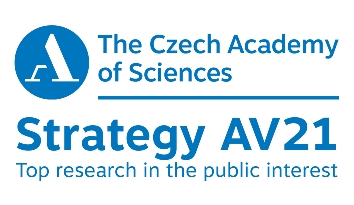
Digital Humanities in Early Music Research I series - Session II
We invite you to join us for the Session II of the Digital Humanities in Early Music Research I series already in June. Despite unforeseeable circumstances, we continue our annual series and transfer it into online interface. The series of conferences and workshops focusing on the use of digital humanities in early music research is accessible free of charge. Reservation is required.
After the success of our first session, given in Prague in March 5th and 6th, the review of which has just been published (in English) in the new issue of Hudební věda journal, we continue with the Session II online.
The last session of the year will take place also online, precise dates will be announced soon. The program of the series up to date is available here.
Reservations for Session II are open till June 19th 2020, please write jointly to the coordinator of the series Jana Franková (frankova(at)mua.cas.cz) and to Hana Vlhová-Wörner (vlhova(at)mua.cas.cz)
Digital Humanities in Early Music Research I: Session II online
Early music databases and encoding
22–30 June 2020
Mondays June 22 and 29 always 4–5 p.m. (CEST)
Wednesday June 24 at 4–7:15 p.m. (CEST)
Tuesday June 30 at 4–7:15 p.m. (CEST)
online sessions via Zoom
Monday 22 June Presentation I
4–4:45 p.m. (CEST)
MEI for Encoding Mensural Music – A Survey
(Martha E. Thomae, McGill University, Montréal, Canada)
A peculiarity of mensural notation is the context-dependent nature of the duration of the notes. Mensural pieces are commonly written in separate parts, a layout that does not allow us to visualize the vertical sonorities and appreciate the polyphonic texture of the piece. Although many mensural pieces are encoded in symbolic formats (e.g., MusicXML and MIDI), these files tend to encode the modern transcription of the piece rather than its original (mensural) values. MEI, instead, allows encoding mensural music in the original notation through its Mensural Module. This presentation showcases some projects that have worked on encoding mensural music in MEI. The common goal of these projects is to present the mensural pieces as scores in the original notation. The MEI representation allows visualizing the vertical sonorities (which are hindered by the separate-parts layout of the original sources) while still maintaining the notation of the sources, thus avoiding to lose some important details of the notation in modern transcriptions.
discussion
Wednesday 24 June Workshop I
4–7:15 p.m. (CEST; 5:30–5:45 p.m. break)
Introduction to MEI
General introduction to MEI (Music Encoding Initiative) and the elements and attributes of the Neumes and Mensural modules.
Monday 29 June Presentation II
4–4:45 p.m. (CEST)
The 'Portuguese Early Music Database'
(Elsa De Luca, CESEM-FCSH, NOVA University of Lisbon, Portugal)
This presentation introduces a large project on Digital Humanities started about ten years ago by Manuel Pedro Ferreira at the NOVA University of Lisbon. The Portuguese Early Music Database (http://pemdatabase.eu/) is a digital library of Iberian (mainly Portuguese) manuscripts with musical notation written before c. 1650. In PEM every manuscript is given in full-color reproduction accompanied by a codicological description. Additionally, the musical contents of all fragments—and a selection of codices with monophonic or polyphonic music as well—are fully indexed. Crucially, plainchant in PEM is indexed following the Cantus Index system (http://cantusindex.org/) and, as such, the PEM Database is connected to other international medieval music databases by means of unique Cantus ID numbers. I will discuss the search capabilities of PEM, its contents, and all the challenges related to the development and implementation of such a unique project in early music.
discussion
Tuesday 30 June Workshop II
4–7:15 p.m. (CEST; 5:30–5:45 p.m. break)
Hands-on MEI Encoding
Presentation of MEI encoding for chant and mensural notations from different areas of Western Europe. Followed by an open discussion of coding examples of the Jistebnický kancionál manuscript.
Program of the Session II for print.



